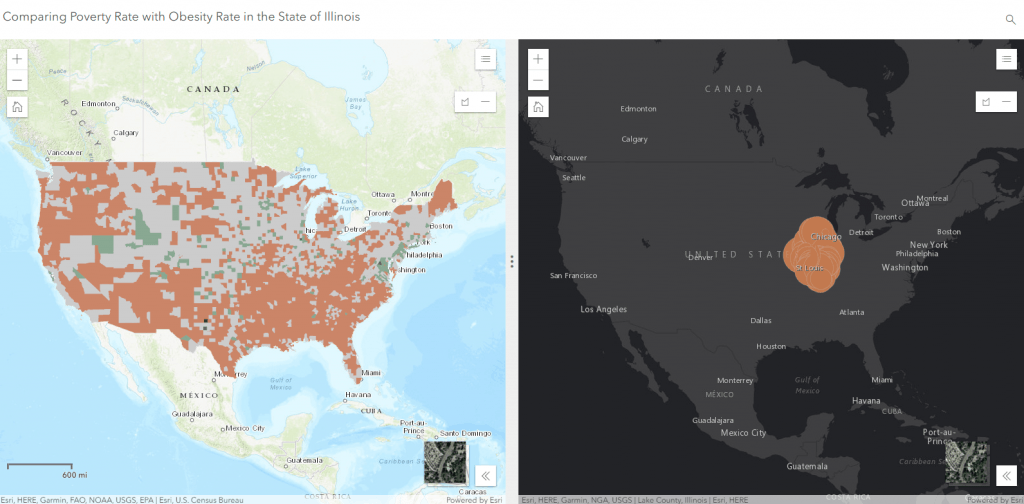The maps shown above offer an opportunity for the reader to examine data concerning poverty and obesity rates by Illinois county. The data demonstrates that there is a correlation in many counties between these two variables. Obesity rates tend to be higher in communities with a higher minority population than their white counterparts. Within these same communities, poverty rates tend to be higher as well. In 2014, almost 1 out of 3 Illinois adults were considered obese and 1 out of 5 children. The adult obesity rates are almost 10% higher than just 14 years ago demonstrating the the issue of obesity is becoming worse in the state. As more individuals become obese, the state has also seen an increase in the number of individuals suffering from cardiovascular disease, cancer, and diabetes. In order to help improve this growing health epidemic, it is critical that Illinois public health officials look at ways to reduce obesity in order to also reduce the number of individuals suffering from obesity-related diseases and illnesses.
The same populations that suffer from obesity often suffer with the issue of poverty. Individuals living in poverty often become trapped by the mindset that the dollars they dedicate to their food budget must go towards foods that are rich in calories as a means of making their dollar go further. Unfortunately, these same foods, e.g. fast food hamburgers or cheap convenience store chips, are low in nutritional value. Consequently, they are meeting their caloric needs but not their nutritional ones and their health often suffers correspondingly. There are 1.6 million individuals in Illinois living in poverty, an alarming 14 percent of the total population. Just as improving obesity rates will improve the health status of individuals, looking at ways to improve poverty rates will have a positive impact upon obesity and health trends.
Source(s): The State of Obesity, Illinois Prevention Research Center, and Food Research & Action Center

